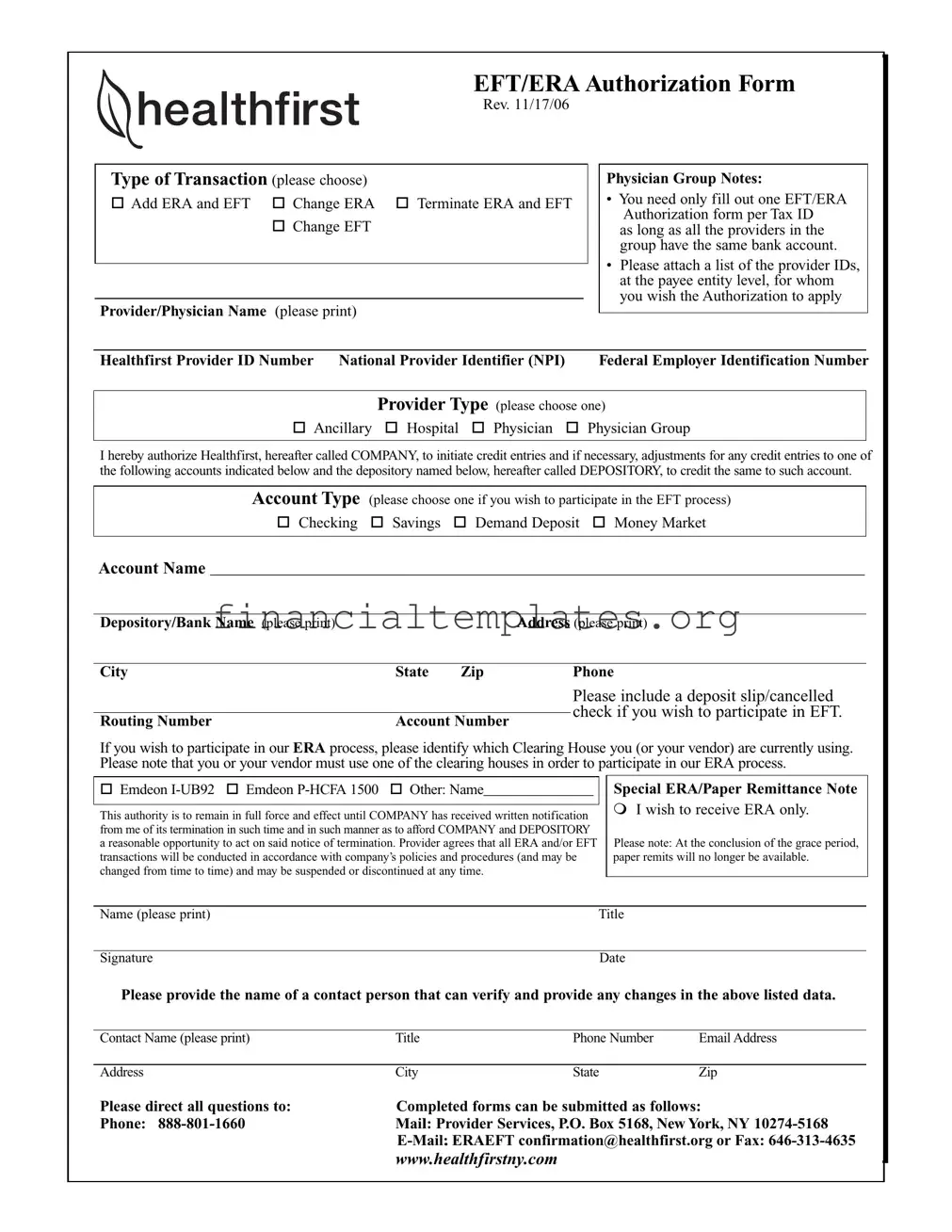The Automatic Clearing House (ACH) Authorization Form is very similar to the Healthfirst EFT/ERA Authorization Form. Both forms authorize financial transactions between businesses and financial institutions. The ACH Authorization Form, like the Healthfirst form, is used to grant permission for automatic deposits or withdrawals, requiring the account holder's information, financial institution details, and a signed agreement to initiate transactions.
A Direct Deposit Authorization Form shares similarities as well, chiefly in allowing employers to deposit funds directly into an employee's bank account. Similar to the EFT section of the Healthfirst form, this document requires the recipient's bank account details, including the routing and account numbers, to set up the payment process. Both forms ensure that funds are transferred electronically, streamlining financial transactions for both parties involved.
The Electronic Funds Transfer (EFT) Agreement is another document closely related to the Healthfirst EFT/ERA Authorization Form. This agreement outlines the terms and conditions under which electronic transactions will occur between two parties. Like the Healthfirst form, it necessitates bank account information, authorization by the account holder, and specifies the process for making adjustments or terminating the agreement.
The Vendor Direct Deposit Authorization Form also parallels the Healthfirst form, facilitating vendor payments via direct deposit. This form collects vendor banking information to automate payments, similar to how health care providers submit their information to Healthfirst for EFT. Both documents streamline financial operations, reducing the reliance on physical checks.
The ERA Enrollment Form is specific to the health care industry, like parts of the Healthfirst document, and allows providers to receive Electronic Remittance Advice instead of paper statements. These forms collect provider information and specify preferences for receiving payment information electronically, promoting efficiency and environmental sustainability by reducing paper use.
A Health Insurance Portability and Accountability Act (HIPAA) Authorization Form, while primarily focused on the privacy and security of patient information, shares an emphasis on regulatory compliance with the Healthfirst form. In the context of EFT/ERA transactions, both documents adhere to standards that protect sensitive financial and personal information during electronic transactions.
The Payment Card Authorization Form is akin to the EFT authorization section of the Healthfirst form, but for credit card transactions. It allows businesses to charge a customer's credit card for services rendered, requiring the cardholder's permission and billing information. Although used in different contexts, both forms permit the electronic transfer of funds from an individual or entity to another.
Finally, the Medical Claims Processing Authorization Form, which permits an insurer or third-party administrator to process health care claims on behalf of a provider or patient, is conceptually related to the Healthfirst form's ERA process. It involves the electronic handling of claim information and payments, necessitating provider information and consent to engage in electronic transactions, promoting efficiency in the health care billing cycle.

